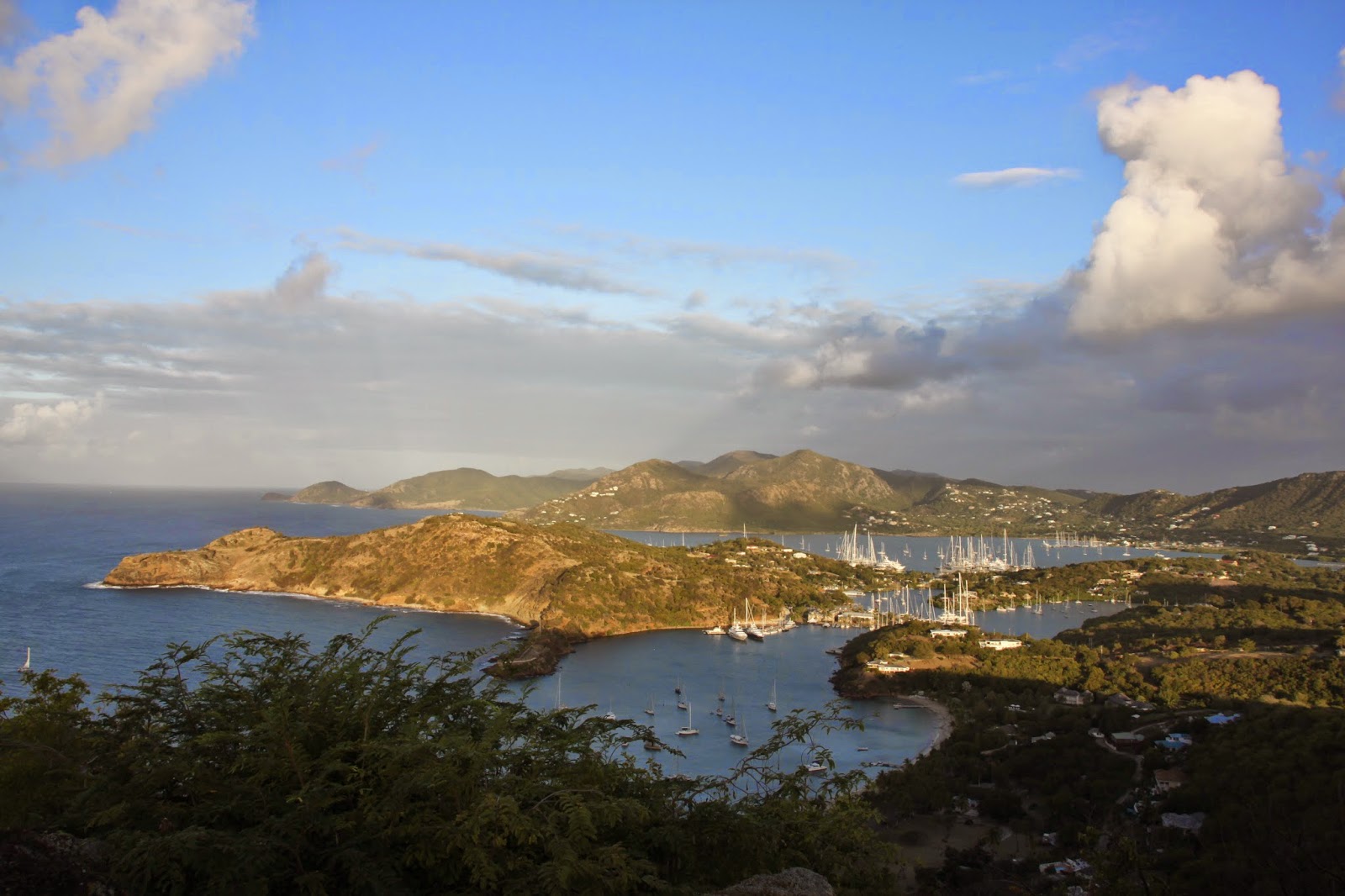Antigua's Potent Mix Of Heritage
 |
| Panoramic view of English Harbour from Shirley Heights |
In Antigua and Barbuda, the visitor is invited to experience the 365 beaches, and, of course, the unofficial cricketing capital of the Caribbean.
The drive to Nelson's Dockyard is replete with the scenic beauty of this eastern Caribbean island, just before the break of dawn, the smell of nature - foliage, dewdrops and the skies waking up to welcome the new day.
The winding road leads to this sheltered marina, the masts of yachts anchored rising from the distance, Nelson's Dockyard is home to a range of structures, which house a museum, restaurant and a bakery, which is perched up on a hillock, accessed by stone path.
 |
| Nelson's Dockyard, Antigua - cultural heritage site and marina in English Harbour |
Built in the 18th century, this dockyard - named after Horatio Nelson, who was stationed as senior captain in 1784 - was the hub of activity. In its heyday, the dockyard housed wooden storehouses, wharves, quarters for the commander-in-chief, storerooms, and a kitchen. A stone wall was built around the dockyard.
ADDITIONAL STRUCTURES
Additional structures were added in this strategic naval base for the British, to transform it into a self-contained hamlet, before it was abandoned in 1889.
The wooden wharves and portions of the stone wall still remain, conserved after restoration projects undertaken in 1951 by the Friends of English Harbour. The National Parks Authority now manages the property.
 |
| A structure stands in Shirley Heights |
The rays of the morning sun fall on the flattened stony grounds, reflecting off the ruins of what used to be a guardhouse, magazine and kitchen, officers' quarters, adjoining parade grounds, a hospital, canteen, and a cemetery.
The silence of the stone columns and walls echoes stories of a past which made this place a strategic military base. It was named after Sir Thomas Shirley, former governor of the Leeward Islands, who strengthened Antigua's defences in 1781 to protect the island's sugar estates and the dockyard.
 |
| A cannon rests at Nelson's Dockyard at English Harbour, Antigua. |
As one left on the journey back, buildings in Shirley Heights seem to resonate words of Albert Einstein: "The revolution introduced me to art, and, in turn, art introduced me to the revolution!"
Perhaps also personifying the revolution, not in the physical sense but of time, that is the only constant and leaves timeless memorials to be cherished.
 |
| Shirley Heights military complex |



Comments
Post a Comment